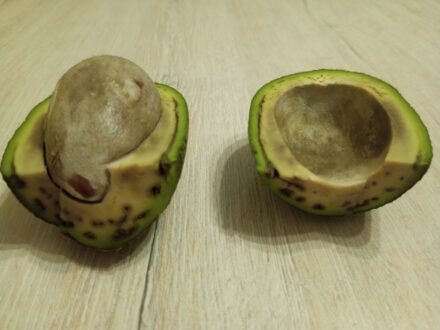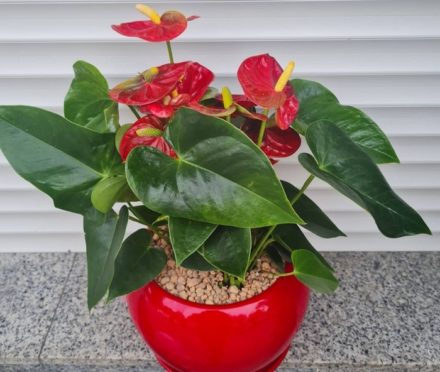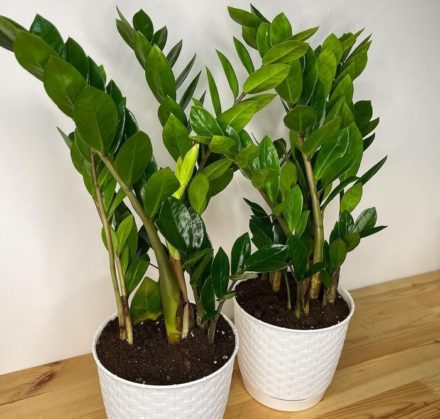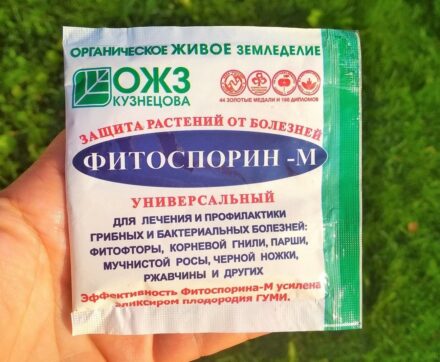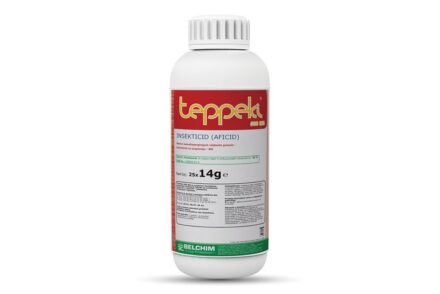Avocado is a child of the tropics, but as an experiment, it is loved to grow at home. It sprouts well from the seed and stretches upward. After a year and a half, gardeners are faced with a number of unpleasant moments. Avocado leaves begin to dry out at the edges, turn black, droop down and fall off. This is due to mistakes made in caring for the plant.
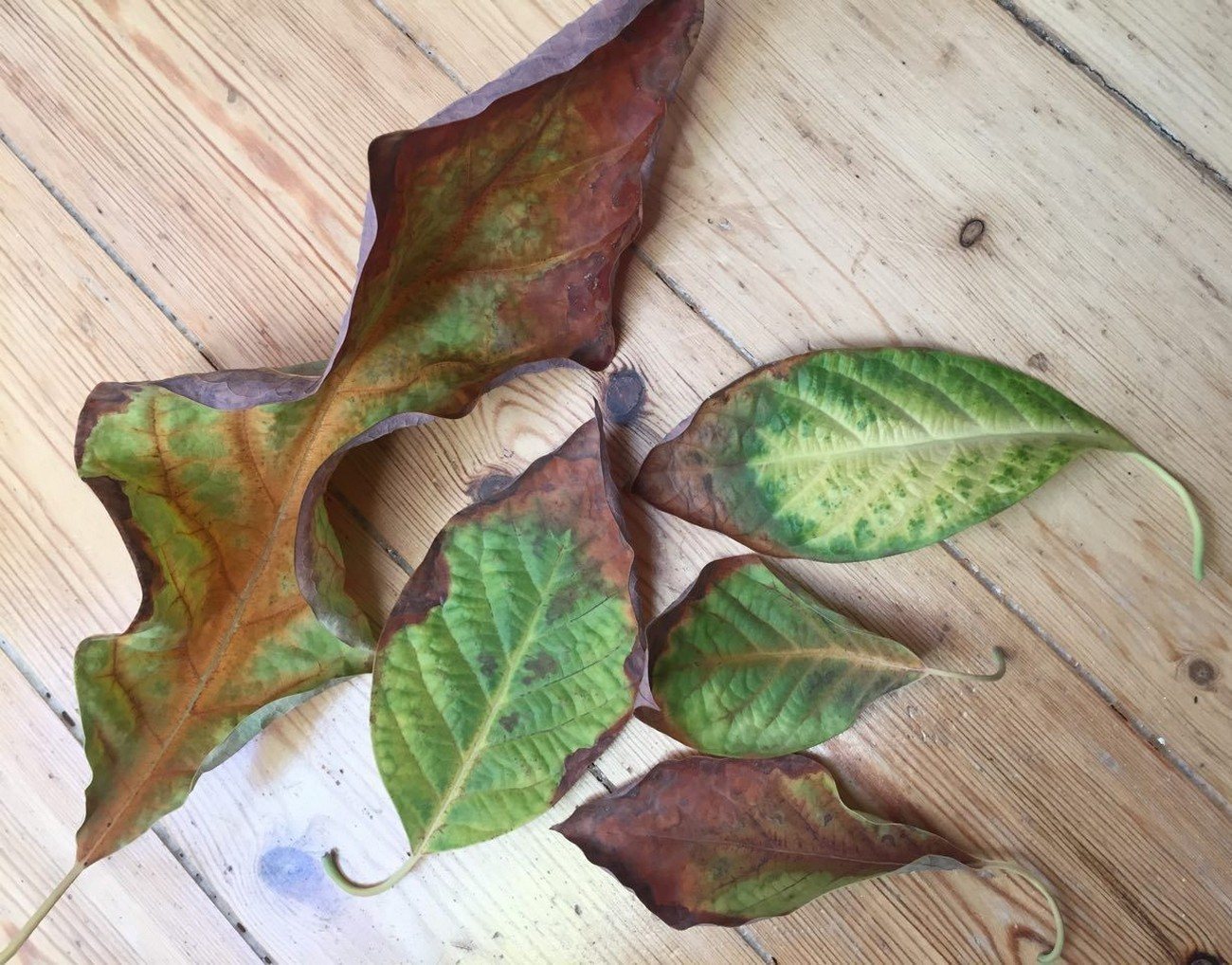
- Incorrect care
- Watering
- Feeding
- Spraying
- Incorrect transplant
- Inappropriate conditions
- Soil
- Pot
- Lighting
- Temperature
- Humidity
- Pests
- Spider mite
- Scale insects
- Diseases
- Powdery mildew
- Root rot
- Late blight
- Preventive measures
Incorrect care
Avocado feels great in its natural environment. In its natural environment, it grows into a large tree. At home, it reaches medium size, but becomes capricious and demanding. At the slightest discrepancy with its requirements, the tips of the leaves begin to darken, then the leaves dry out completely and fall off. It is accustomed to tropical rains, a warm climate, nutrient-rich soil with low acidity. These conditions are necessary for its rapid growth. When caring for it, you need to try to create a climate at home that meets its requirements.
Watering
Watering plays an important role in growing avocado.Why do avocado leaves dry out, turn black and fall off at home?
Skip to content
Wash
Ironing
Stains
Cleaning
Pests
Technique
Storage
Dishes
Interior
Garden
Adviсe
Why do avocado leaves dry out, turn black and fall off at home?
Avocado is a child of the tropics, but people like to grow it at home as an experiment. It sprouts perfectly from the seed and stretches upward. After a year and a half, flower growers are faced with a number of unpleasant moments. Avocado leaves begin to dry out at the edges, turn black, droop and fall off. This is due to mistakes made in caring for the plant.
In this article we will tell you:
Improper care
Watering
Top dressing
Spraying
Incorrect transplant
The soil
Pot
Lighting
Temperature
Humidity
Pests
Spider mite
Shields
Diseases
Powdery mildew
Root rot
Late blight
Prevention measures
Show in full ▼
Is this your first time growing avocados at home?
Yes
No, I already had experience
Improper care
Avocado thrives in its natural environment. In its natural environment it grows into a large tree. At home it reaches medium size, but becomes capricious and demanding. At the slightest discrepancy with its requirements, the tips of the leaves begin to darken, then the leaves dry out completely and fall off. It is accustomed to tropical rains, a warm climate, and nutrient-rich soil with low acidity. These conditions are necessary for its rapid growth. When caring for it, you need to try to create a climate at home that meets its requirements.
Watering
Watering plays an important role in growing avocados.It reacts equally negatively to both over-dried and over-wet soil. Incompetent watering can lead to soil drying out, which is detrimental to the root system, or, conversely, excessive watering will lead to the creation of a damp environment in the soil, which promotes root rot and is an excellent habitat for harmful parasites. Therefore, avocado should be watered strictly according to the schedule. Water for irrigation should be 1-2 degrees higher than room temperature. It is not recommended to use ordinary, settled water. Filtered water, without a large amount of sulfate salts and nitrites, is more suitable for it.
The frequency and volume of watering depend on the season. In spring and summer, it is watered 1-2 times a week. To accurately determine the time of watering, you should pay attention to the top layer of soil. If it has become dry, then the plant should be watered. The soil should not dry out completely. In autumn and winter, the frequency of watering is reduced to 1 time. This representative of the tropics prefers to be watered rarely, but abundantly. Top dressing
In the natural environment, avocado has enough sources of nutrition in the soil. Home conditions cannot boast such sophistication. The soil in which avocado grows gradually changes its composition. Nutrients in it are depleted. To replenish them, the soil is fertilized.
Top dressing of the soil is carried out in the warm period, in spring and summer. Mineral and organic fertilizers are ideal for this, as well as special types of top dressing for decorative-deciduous or citrus representatives. To achieve excellent results, fertilizers should be alternated. They cannot be used simultaneously.
The root system of avocado does not go deep into the soil.It reacts equally negatively to both over-dried and over-wet soil. Incompetent watering can lead to soil drying out, which is detrimental to the root system, or, conversely, excessive watering will lead to the creation of a damp environment in the soil, which promotes root rot and is an excellent habitat for harmful parasites. Therefore, avocado should be watered strictly according to the schedule. Water for irrigation should be 1-2 degrees higher than room temperature. It is not recommended to use ordinary, settled water. Filtered water, without a large amount of sulfate salts and nitrites, is more suitable for it.
The frequency and volume of watering depend on the season. In spring and summer, it is watered 1-2 times a week. To accurately determine the time of watering, you should pay attention to the top layer of soil. If it has become dry, then the plant should be watered. The soil should not dry out completely. In autumn and winter, the frequency of watering is reduced to 1 time. This representative of the tropics prefers to be watered rarely, but abundantly. Top dressing
In the natural environment, avocado has enough sources of nutrition in the soil. Home conditions cannot boast of such sophistication. The soil in which avocado grows gradually changes its composition. The nutrients in it are depleted. To replenish them, the soil is fertilized.
Soil top dressing is carried out in the warm period, in spring and summer. Mineral and organic fertilizers are ideal for this, as well as special types of top dressing for decorative-deciduous or citrus representatives.He has the same negative attitude towards over-dried soil and too wet soil. Ill-proper watering can lead to drying out of the soil, which is detrimental to the root system, or, conversely, excessive watering will create a damp environment in the soil, which promotes root rot and is an excellent habitat for harmful parasites. Therefore, avocados should be watered strictly according to schedule. Water for irrigation should be 1-2 degrees above room temperature. It is not recommended to use ordinary, settled water. Filtered water is more suitable for it, without a large amount of sulfate and nitrite salts.
The frequency and volume of watering depend on the time of year. In spring and summer it is watered 1-2 times a week. To accurately determine the time of watering, you should pay attention to the top layer of soil. If it becomes dry, the plant should be watered. The soil should not dry out completely. In autumn and winter, the frequency of watering is reduced to 1 time. This representative of the tropics prefers to be watered rarely, but abundantly.
- Top dressing
- In their natural environment, avocados have ample food sources in the soil. Home conditions cannot boast of such sophistication. The soil in which avocados grow gradually changes its composition. The nutrients in it are depleted. To replenish them, the soil is fertilized.
- The soil is fertilized during the warm period, in spring and summer. Mineral and organic fertilizers are ideal for this, as well as special types of fertilizer for decorative foliage or citrus fruits. To achieve excellent results, fertilizers should be alternated. They cannot be used at the same time.
The avocado root system does not go far into the soil. Therefore, to recharge, it is necessary to spread the fertilizer over the surface of the soil and also spray it over all the foliage.
When purchasing fertilizer, you should pay attention to its composition. It must contain nitrogen, phosphorus, potassium and magnesium and sulfur.
Is it possible to eat avocado with brown veins and blackness inside?
To avoid such troubles, you should fertilize the soil once a month. It is important to remember that excessive fertilization is extremely detrimental to the root system. It will lead to the death of the avocado.
Spraying
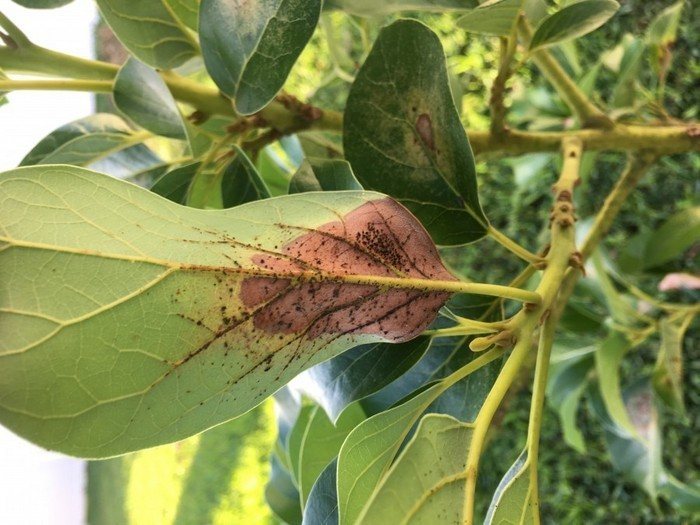
Avocados need tropical rains. He will be very grateful to you for a warm shower, which you can give him once a week.
In rooms with central heating, it needs daily spraying to avoid drying out problems. It's important to do it right. It is not the avocado itself that is sprayed as much as possible, but only the air around it, without direct contact of moisture with the leaves. Clean the foliage from dust with a damp sponge every time before watering.
Placing sphagnum moss in a tray and regularly moistening it will help create tropical conditions.Combining daily spraying with other methods is possible. This will not harm the avocado.
For ease of spraying, you can place all plants with similar requirements in one place.
Incorrect transplant
- Leaves may darken, dry out and fall off if replanting rules are not followed.
- The first transplant is done as soon as the avocado reaches 15 cm in height. Then every year in the spring. After 4 years of life, transplantation is carried out once every 3 years.
- It needs to be replanted very carefully, keeping a lump of earth on the root system. The soil for his next place of residence is being specially prepared. To do this, mix garden soil with sand, humus and sphagnum in equal parts. Drainage must be placed at the bottom of the pot. For avocados, medium-sized pebbles are best. Large stones will harm root development.
- In the finished soil, placed on top of the drainage, a depression is made corresponding to the size of the root system. The avocado roots in a ball of earth are placed in a depression, being careful not to break or bend them.The soil around the transplanted plant is leveled and loosened. Then water generously.
Sometimes avocados drop their leaves after transplanting. There's no need to get upset. If this happens, continue to water the trunk according to the previous schedule. In addition, once a week you need to spray the trunk with an immunostimulant; Epin is excellent for this.
Unsuitable conditions
In order for an avocado to please you with a strong trunk and a luxurious crown, you need to grow it in familiar climatic conditions. Simply placing it on the windowsill will not suit him. If possible, in warm weather it should be taken out to the balcony, or even better, taken to the country house. In the open air, the plant will quickly grow, its leaves will become large, strong and bright green. If this is not possible, by following simple rules you can create similar climatic conditions for it at home.
Fitosporin-M
For active growth and freedom from diseases, avocados should be planted in the right soil.Slightly acidic soil with a pH level of 6 to 6.8 is more suitable for it. The soil should be loose and not prone to compaction or souring. Most soils that can be purchased in stores fully meet these requirements.
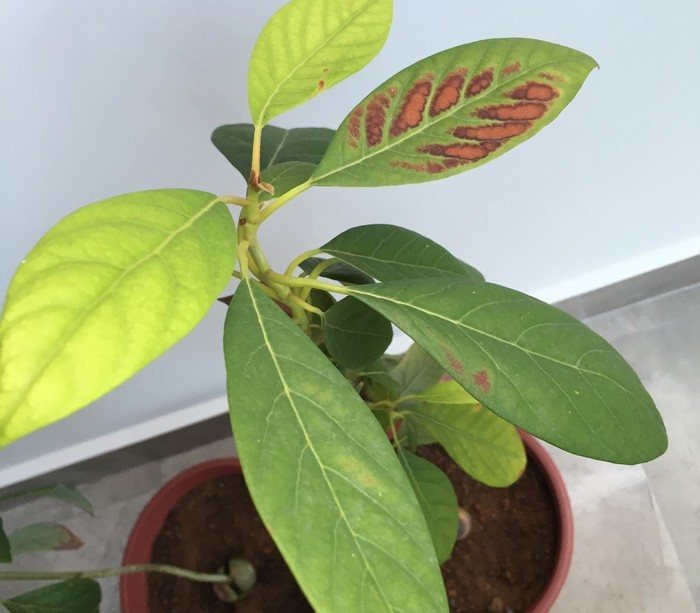
To transplant an avocado into the most suitable soil for it, you should prepare it yourself. To do this, mix turf soil, sand and leaf soil in proportions of 2:1:1. If possible, it is better to replace leaf soil with humus. An excellent solution would be to add fine expanded clay or perlite to it.
If the soil in which the avocado sprout is located is prone to compaction, then the entire period until the next replanting of the plant, you need to loosen the soil yourself. This should be done so that oxygen actively penetrates into the lower layers.
Pot
Not every pot is suitable for avocados to live comfortably.
When transplanting a sprouted seed into the ground for the first time, you need to take into account that the avocado root system develops very quickly.The roots do not grow in width, but rather deepen. Therefore, in order for the plant to feel comfortable until the next transplant, you should choose a narrow and long pot, not a wide one.
As a rule, the container should be 10-15 cm higher than the previous one. For each subsequent transplant, you should choose a container according to the specified dimensions.
For convenience, it is better to initially choose a floor container.
Lighting
Avocado requires lighting all year round. For this reason, it should be placed on the southern or southeastern side of the room. But at the same time, direct sunlight should be avoided. If it grows near a window, then protection should be placed on the glass. If this is not done, its leaves will get burned and fall off.
In the cold season, you should not rely on sunlight. To maintain the lighting mode, you should use lamps. A fluorescent lamp (30 watts) and an LED (15 watts), both cold light, have proven themselves to be excellent.It is also possible to illuminate with a phytolamp with an output of up to 2000 lux. For greater effect, you need a reflector, which you can make yourself.
The required daylight hours are 10-14 hours. At night, no backlight is needed.
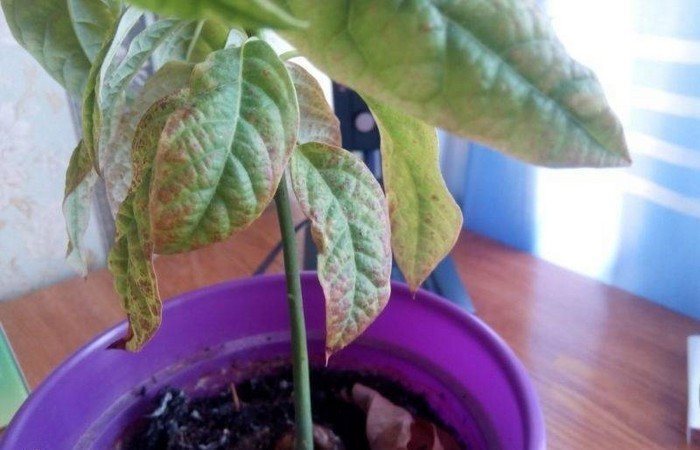
In poor lighting, the process of photosynthesis in the leaves will slow down significantly. They will begin to turn yellow and fall off.
Temperature
- When the humidity conditions are met, avocados love warmth. It grows actively at a temperature of 25 degrees. In the cold season it will feel comfortable at a temperature of 16-20 degrees. A sharp cold snap can have a negative impact on it.
- If you grow it in open ground, then cover it with film at the slightest drop in temperature below the specified norm. If the heat drops further, remove it indoors. At temperatures below 5 degrees, the avocado will begin to shed its leaves. If the plant is not removed to a warmer room, it may die.
- Teppeki insecticide: instructions for use to protect plants from pests
- Humidity
The most comfortable humidity level is 66-65%. In this case, the ambient humidity is taken into account. In dry climates, it requires irrigation at least 1-2 times a day. If this is not done, the avocado leaves will turn black and fall off. The plant itself may also die.


